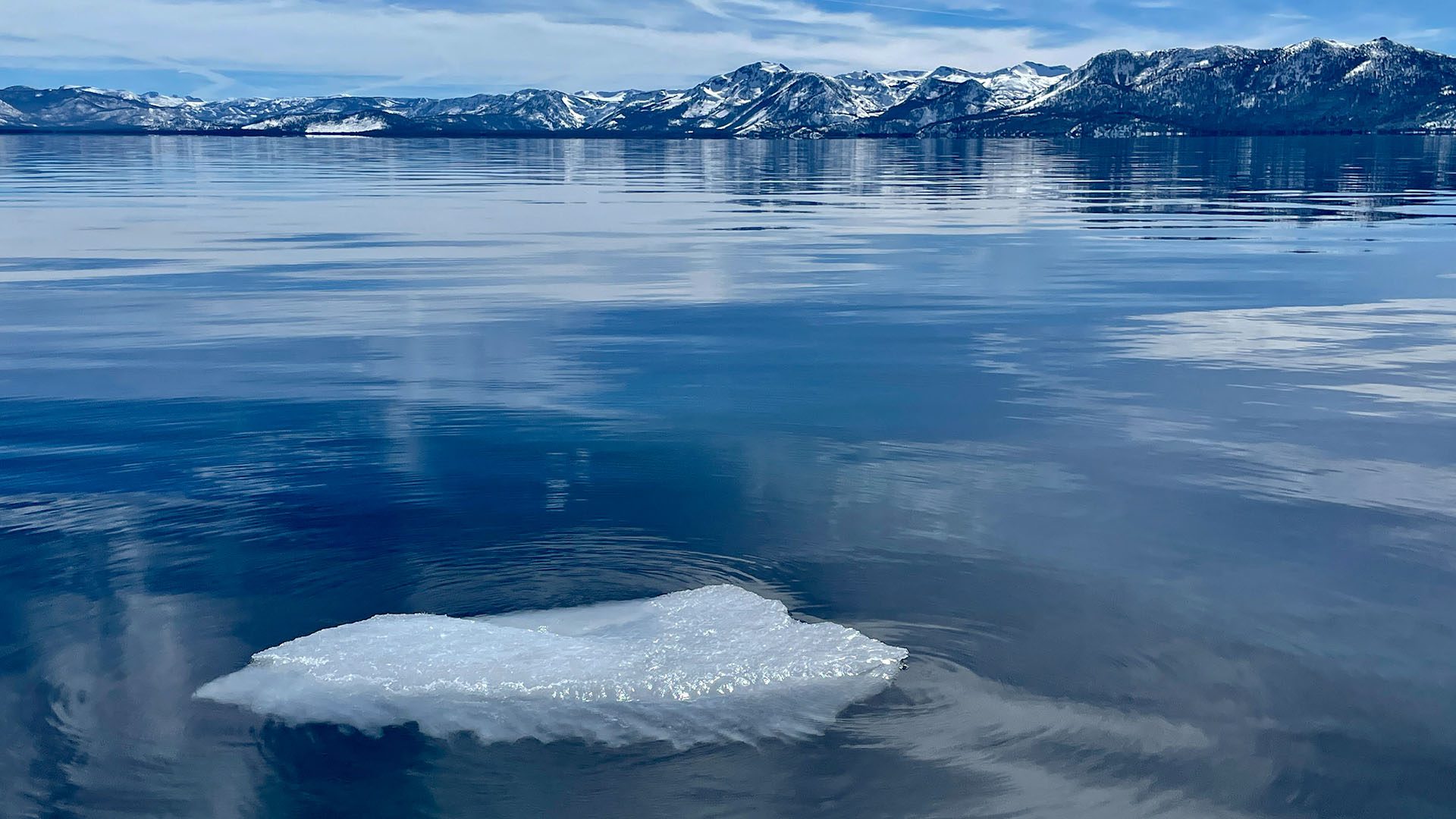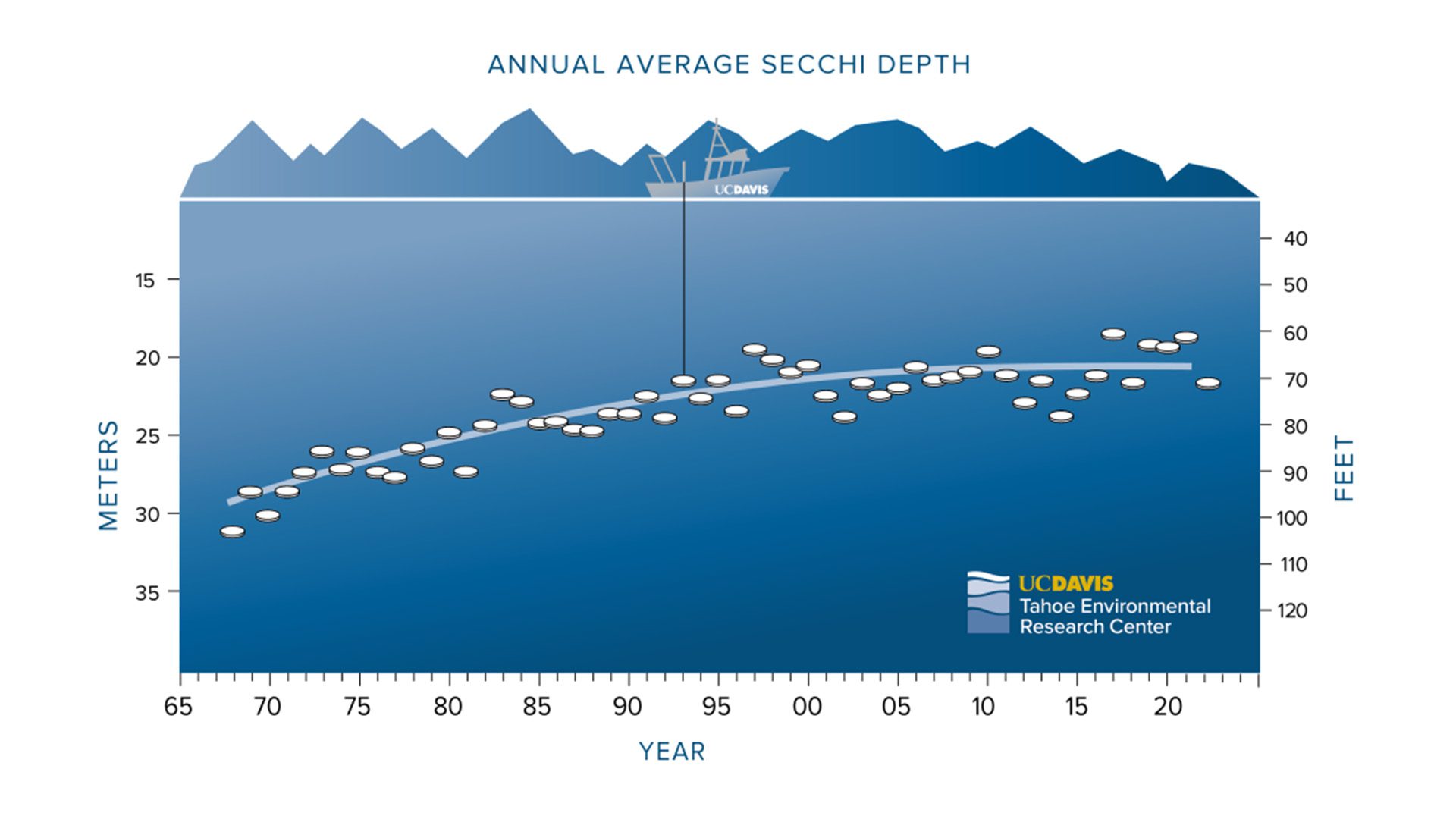According to a recent report, Lake Tahoe has reached its highest water clarity point since the 1980s, and it’s all thanks to zooplankton.

The report was published by the University of California, Davis’ Tahoe Environmental Research Center (TERC), which has been tracking water clarity and other aspects of the lake since the 1960s. One way the center measures clarity is by lowering a 10-inch white disc into the water and measuring the depth at which it can no longer be seen. By using this method, the visibility of the lake’s surface water has averaged over 80 feet deep in the past six months. In comparison, the visibility averaged 61 feet in 2021.
Lake Tahoe’s improved clarity can predominantly be attributed to the growth of Daphnia, which is a tiny zooplankton that efficiently eats and removes fine particles and algae from the water. In a lake, the fine particles are the root cause of clarity decline. Daphnia is native to Lake Tahoe and makes up an important part of the lake’s food web.

For many recent years, the Daphnia population was absent from the lake because of the introduction of an invasive shrimp species, the mysis shrimp. However, in 2022, the mysis shrimp population practically disappeared from the lake. The cause of the population’s disappearance is still unknown, but some experts point to a fungal infection of what had been the shrimp’s primary food source.
Even though the mysis shrimp will eventually return and the clarity will go back to what it was, Daphnia will likely keep Lake Tahoe’s water clear for the next couple of years. As described by Geoff Schladlow, the director of TERC, Lake Tahoe’s water clarity, the zooplankton, and the shrimp provide a sort of “natural experiment” that is “…presenting an opportunity for us to finally understand what role the food web plays in the clarity of Lake Tahoe.”
While enhanced lake clarity is good for tourism and recreational purposes, it is also important for the diversity and productivity of aquatic life. For example, clearer water allows for more sunlight to reach submerged aquatic vegetation. With more sunlight, the vegetation can produce oxygen, supply habitat for fish, and provide food for waterfowl, fish, and mammals.







